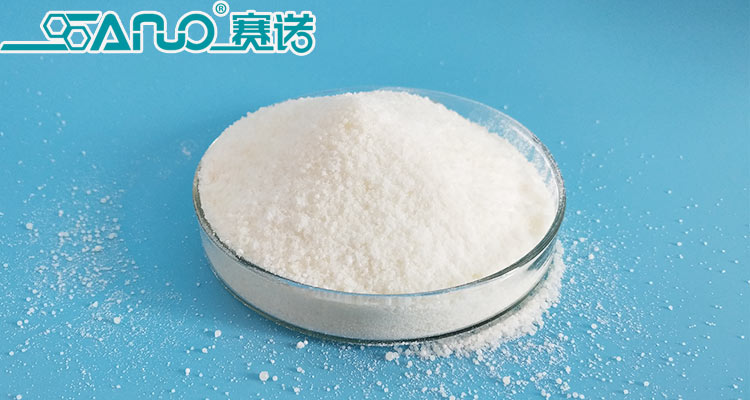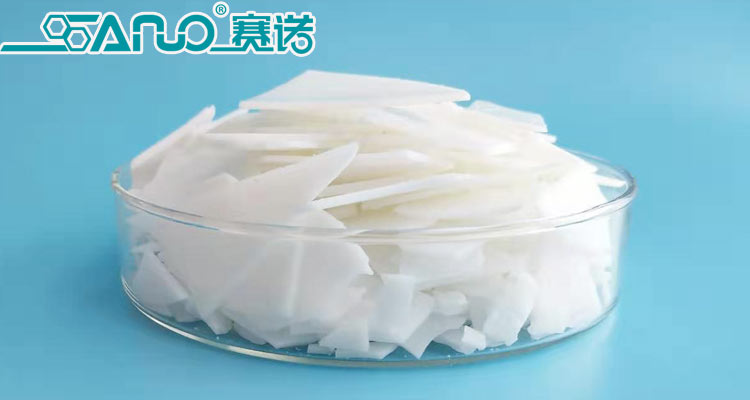Soft PVC products contain certain plasticizer components. These plasticizers will migrate, extract and volatilize to varying degrees during the secondary processing and use of the products. The loss of plasticizer will not only reduce the performance of PVC products, but also pollute the surface of products and contacts. More seriously, it will bring a series of problems to the environment and human health. Therefore, the migration and extraction of plasticizer has become a major obstacle restricting the wide application of soft PVC products.
In PVC system, low density oxidized polyethylene wax can be plasticized ahead of time, and the later torque is reduced. It has excellent internal and external lubrication. It can improve the dispersity of colorant, give products a good luster and improve production efficiency.

Adverse consequences of plasticizer migration and withdrawal
1. When the migration and extraction of plasticizer in PVC are serious, the products will change greatly, resulting in softening, tackiness and even surface rupture of the products. The precipitates often cause product pollution and affect the secondary processing of the products. For example, plasticizer molecules in PVC waterproof coiled materials migrate, and PVC without plasticizer will shrink and harden, which may lead to the failure of waterproof function. When soft PVC products are pasted with general solvent-based adhesive, the plasticizer inside the products will often migrate to the bonding layer, resulting in a sharp decline in bonding strength, resulting in problems such as weak bonding or degumming. When soft PVC products are coated or painted, they also face the problem of coating or paint layer falling off due to the extraction of plasticizer. PVC printing, plasticizer extraction is a big taboo in ink and printing manufacturing industry.
2, In the process of plasticizer precipitation in PVC, some components, such as pigment granules, flavors, antistatic agents and stabilizers, will be brought out. Due to the loss of these components, the physical properties of PVC products will decline, and some properties will even be lost. These precipitates will also pollute and destroy the substances in close contact with them. If soft PVC and polystyrene products are put together, the plasticizer migrated from PVC will affect the performance of polystyrene products and cause the softening of polystyrene products.
Form of plasticizer loss
Plasticizers, except polyester and other high molecular weight plasticizers, are organic small molecular substances. When they are added to PVC, they are not polymerized on the PVC polymer chain, but are combined with PVC molecules by hydrogen bond or van der Waals force to retain their independent chemical properties.
When the soft PVC is in contact with the fixed medium (gas phase, liquid phase and solid phase) for a long time, the plasticizer will be gradually resolved from the PVC and enter the medium. According to the different contact media, the loss forms of plasticizer can be divided into volatilization loss, extraction loss and migration loss.
The loss process of plasticizer volatilization, extraction and migration includes three basic stages:
(1) The plasticizer diffuses to the inner surface;
(2) The inner surface changes into a “recumbent” state;
(3) Diffuse away from the surface.

The loss of plasticizer is related to its own molecular structure, molecular weight, compatibility with polymer, medium, environment and other factors. The volatilization of plasticizer mainly depends on its molecular weight and ambient temperature, the extractability mainly depends on the solubility of plasticizer in the medium, and the mobility is closely related to the compatibility of plasticizer and PVC. The diffusion of plasticizer in PVC can be carried out under the conditions of polymer and medium that will not penetrate into the polymer, or under the conditions of medium that will infiltrate the polymer. Different changes and reactions of polymer surface will affect the diffusion of plasticizer. The interfacial diffusion of plasticizer is a complex process, which is related to the interaction of medium, PVC polymer and plasticizer.
Influencing factors of plasticizer migration and extraction
1. Relative molecular weight and molecular structure of plasticizer
The larger the relative molecular weight of plasticizer, the larger the volume of groups contained in the molecule, the more difficult it is for them to diffuse in plasticized PVC, the less likely they reach the surface, and the lower the probability of extraction and migration. To have good durability, it is necessary that the relative molecular weight of plasticizer is more than 350. Polyesters and phenylpolyacid esters (such as trimellitic acid esters) plasticizers with a relative molecular weight of more than 1000 have very good durability.
2. Environment temperature
The higher the ambient temperature of PVC products, the more intense the Brownian motion of molecules, and the greater the force between plasticizer molecules and PVC macromolecules, which makes it easier for plasticizer molecules to diffuse to the product surface and further into the medium.
3. Plasticizer content
In general, the higher the content of plasticizer components in the formula, the more plasticizer molecules in plasticized PVC and the more plasticizer molecules on the product surface. The more easily the plasticizer is captured by the contact medium and extracted or migrated, and then the inner plasticizer molecules flow and supplement from the high concentration to the low concentration surface. At the same time, the more small and medium-sized plasticizers in PVC, the greater the probability of certain collision and action between plasticizer molecules, so as to weaken the binding force between some plasticizer molecules and PVC macromolecules and make their movement and diffusion in PVC easier. Therefore, in a certain range, the increase of plasticizer content makes the plasticizer easier to diffuse.
4. The medium
The extraction and migration of plasticizer are not only related to the properties of plasticizer itself, but also closely related to the medium in contact. The physicochemical properties of liquid medium in contact with plasticized PVC are the main factors affecting the extraction of plasticizer. General plasticizers are easy to be extracted by gasoline or oil solvents, but difficult to be extracted by water.
5. Time
According to the literature, the migration rate of DOP in PVC film is related to time. At the initial stage of migration, the rate is faster. The concentration of plasticizer migrating to the surface is linear with the square root of migration time. Then, with the extension of time, the migration rate gradually decreases and reaches equilibrium after a certain time (720h left and right).
Measures to solve the precipitation and migration of PVC plasticizer
1. Adding polyester plasticizer
Polyester plasticizer has good affinity with DOP and other small molecular plasticizers. When there is a certain amount of polyester plasticizer in PVC plasticizer, it can attract and fix other plasticizers not to diffuse to the surface of PVC products, so as to reduce and prevent the migration and extraction of plasticizer.
2. Adding nanoparticles
The addition of nanoparticles can reduce the mobility loss rate in soft PVC and improve the service performance and service life of soft PVC materials. The ability of different nanoparticles to inhibit the migration of plasticizer is different, and the effect of nano SiO2 is better than that of nano CaCO3.

3. Use ionic liquids
Ionic liquid can control the glass transition temperature of polymer in a large temperature range. The elastic modulus of the material added with ionic liquid is equivalent to that when DOP is used as plasticizer. Ionic liquid is an ideal substitute for plasticizer because of its low volatilization at high temperature, low leachability and good UV stability.
4. Surface spraying protective coating
Coating a layer of non migrating material on the polymer surface to reduce the leaching and migration of plasticizer. The disadvantage of this method is that it may reduce the flexibility of the material. However, experiments show that this coating technology can effectively prevent the leaching of plasticizer and has a wide application prospect in the field of medical PVC.
5. Surface correlation
In water with appropriate phase transfer catalyst, the plasticizer surface is modified with sodium sulfide. Under the action of light, the surface of PVC products forms a network structure, which can effectively prevent the migration of plasticizer. The soft PVC treated by this method is very suitable for application in medical and related equipment.
6. Surface modification
The leaching of plasticizer in polymer solution can be controlled by adjusting the characteristics of polymer surface. Among many modification technologies, grafting water-soluble polymer on the surface is one of the main directions.
It is suggested that the method of grafting PEG on the surface of soft PVC should be used to enhance the hydrophilicity of the substrate surface, so as to inhibit the leaching of plasticizer.
In addition, using phase transfer catalyst and thiosulfate anion to replace chlorine atoms in PVC in aqueous solution system can also enhance surface hydrophilicity and prevent the leaching and transfer of plasticizer in different solvents such as hexane.
Conclusion:
The extraction and migration of plasticizer is one of the important problems in the application of soft PVC products. If it can not be well solved, it will not only affect the service performance and effect of soft PVC products, but also bring certain harm to human living environment and human health. Therefore, this problem has attracted more and more attention.
Qingdao Sainuo Chemical Co.,Ltd. We are manufacturer for PE wax, PP wax, OPE wax, EVA wax, PEMA, EBS,Zinc/Calcium Stearate…. Our products have passed the REACH, ROHS, PAHS, FDA testing. Sainuo rest assured wax, welcome your inquiry! Website:https://www.sanowax.com
E-mail:sales@qdsainuo.com
sales1@qdsainuo.com
Adress:Room 2702,Block B, Suning Building, Jingkou Road, Licang District, Qingdao, Chinac
Post time: Sep-18-2021
